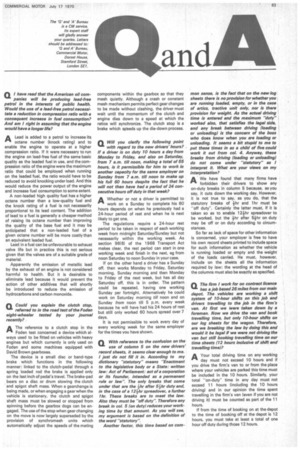CI I have read that the American oil com
Page 65

If you've noticed an error in this article please click here to report it so we can fix it.
panies will be producing lead-free petrol in the interests of public health. Would the use of a lead-free petrol necessitate a reduction in compression ratio with a consequent increase in fuel consumption? And am I right in assuming that the engine would have a longer life?
ALead is added to a petrol to increase its
octane number (knock rating) and to enable the engine to operate at a higher compression ratio. If it were necessary to run the engine on lead-free fuel of the same basic quality as the leaded fuel in use, and the cornpression ratio of the engine were the maximum ratio that could be employed when running on the leaded fuel, the ratio would have to be reduced to avoid knocking under load. And this would reduce the power output of the engine and increase fuel consumption to some extent.
A non-leaded high quality fuel has a higher octane number than a low-quality fuel and the knock rating of a fuel is not necessarily proportional to its lead content. The addition of lead to a fuel is generally a cheaper method of raising its octane number than improving the quality of the base fuel and it may be anticipated that a non-leaded fuel of a given octane number will be more costly than an equivalent leaded fuel.
Lead in a fuel can be unfavourable to exhaust valve life but in practice this is not serious given that the valves are of a suitable grade of material.
Apparently the emission of metallic lead by the exhaust of an engine is not considered harmful to health. But it is desirable to eliminate lead because it would prevent the action of other additives that will shortly be introduced to reduce the emission of hydrocarbons and carbon monoxide.








































































































